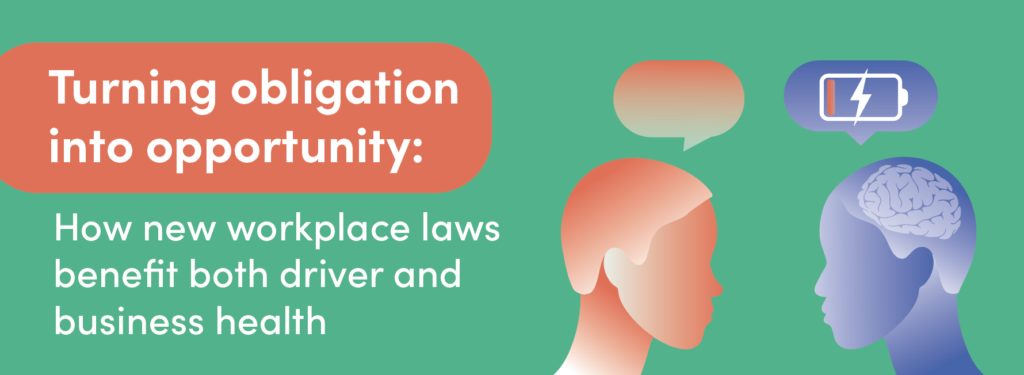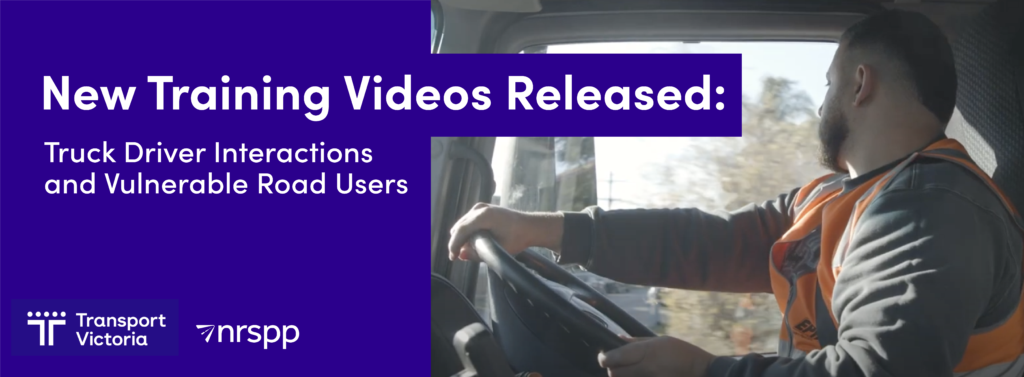Turning obligation into opportunity: How new workplace laws benefit both driver and business health

Sometimes, legislative changes can place onerous obligations on organisations and their workers, with the time and resources needed to comply not translating to a benefit that makes the return worth the necessary investment.
New workplace laws, which treat a mental health-related injury in the workplace in the same way we have traditionally approached physical health, are an opportunity to simultaneously drive benefits for the personal wellbeing of drivers and other workers and the financial wellbeing of the organisations that employ them.
And the even better news for businesses who already proactively prevent and manage physical health injuries is that they will likely already comply with many of the new obligations, with significant overlap between mental and physical injury risks.
The new laws essentially mean psychological and mental injuries are now treated the same as a physical injury. They have been progressively introduced across Australia and, with Victoria planning to introduce the laws in December, the laws apply in every state and territory.
And the focus of the new laws, which treat light and heavy vehicle drivers the same, is reducing psychosocial hazards and preventing mental injury, which helps reduce expensive workers compensation premiums and avoid the costs of having drivers and other employees unable to work.
The average cost of each mental injury claim is estimated at $220,000, and while making up less than 20 per cent of claims, mental injury claims account for 40 per cent of workers’ compensation costs. And greater awareness around mental health is driving increasing claims rates with mental injuries accounting for 9 per cent of all WorkCover claims in Victoria in 2009, for example, which that had grown to 18 per cent in 2024.
These increased costs flow through to higher premiums for businesses on top of the costs of having an unwell driver or other employee unable to return to work. Investing in preventing psychological injuries costs business much less than the cost of claims, and research shows that a psychologically healthy workplace is 19% more productive and has 27 per cent lower staff turnover.
To comply with the new laws, business owners, Fleet Managers or Health and Safety Managers should review existing policies and procedures to specify psychosocial hazards alongside existing physical risks, provide training in identifying hazards and reporting incidents, and consult drivers and other workers on what those risks are and how to manage them.
Psychosocial hazards for drivers, for example, could include being exposed to fatigue, vicarious trauma from witnessing crashes, and aggression from other drivers. Safe Work Australia has also produced a Code of Practice to help employers meet their obligations. Safe healthy workers and a more efficient operation “We are well versed in preventing and managing a physical injury but mental injuries often have a long recovery time and getting back to work is difficult,” explains Professor Sarah Anderson, Director of the Institute for Safety, Compensation and Recovery Research.
“What the new laws are really doing is making the process for psychological injuries the same as physical injuries. So the process you have in place for physical, you now have to have in place for psychological, and you need to have those psychosocial risks specifically identified.
“The first step is to talk to your drivers and workers about the hazards and risks that they see and then having some mitigations in place”.
“When they identify those things happening to them, employees also have an obligation to report them so it can be managed, so it’s no different from your obligation to report any hazard or near miss.
“Under the new laws, the employer must develop psychosocial risk policies with the employee. So drivers and other workers need to provide their input to identifying hazards and assessing risks and working out reasonable control measures.
“That approach reflects that often workers are the people best placed to highlight what their stresses are and they’re also one of the best groups to come up with usable, workable mitigations for those risks.
“The aim of the laws is to address risks earlier and prevent injuries so we don’t get to a situation where someone can’t work. The cost of preventing psychological injuries is about three to five times lower than the cost of claims. So what you spend on prevention, you will save by reducing claims any day of the week.”
To find out more, register for NRSPP’s October webinar with Professor Sarah Anderson, ‘Time to talk: Complying with new workplace laws to prevent mental health injury’ and download this Thought Leadership article.





